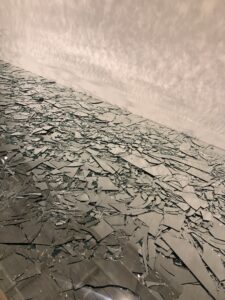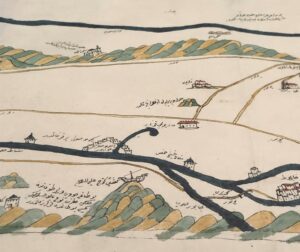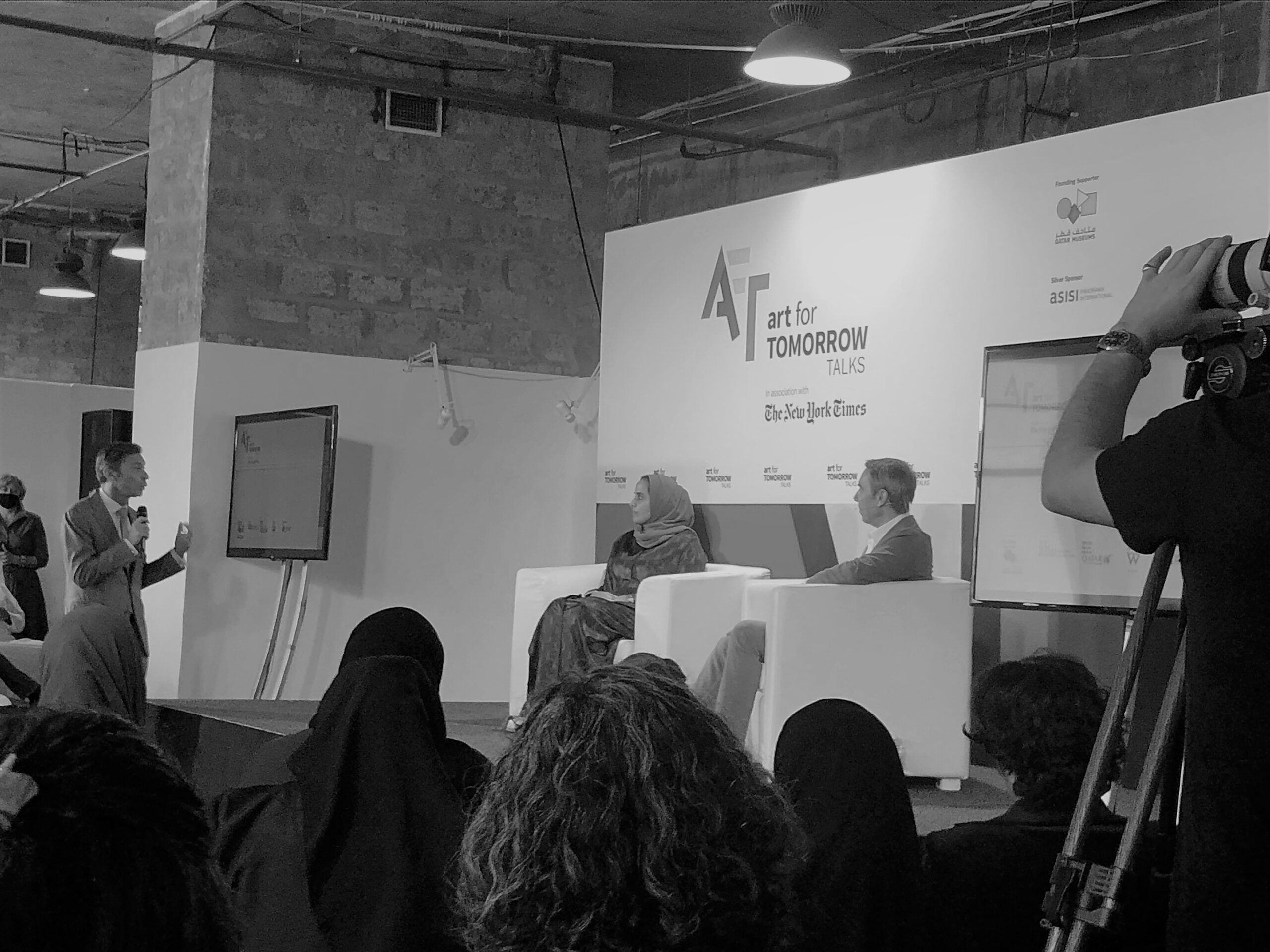William Temple Scholar Yasmin Khatun Dewan reflects on the significance of a recent exhibition in Qatar.
I have just got back from Doha, Qatar. I was visiting the Gulf nation for its arts festival ‘Qatar Creates’—a summit of celebration for the creative industries. The event saw the launch of a range exhibitions, showcasing the country’s arts venues and heritage. It also served as a platform for various conversations, including one between the Qatari royal driving the arts initiatives—Sheikha Al-Mayassa bint Hamad bin Khalifa Al Thani, sister of the current emir and chairperson for Qatar Museums—and American pop culture artist Jeff Koons.
At the event, co-hosted by The New York Times, an engaging conversation ensued between the Qatari princess and the American artist. Koons recounted his sources of inspiration and his childhood, which is often referred to in his works. For example, he spoke about the cartoon Popeye, and spinach as his source of strength. Koons uses this motif in his work, explaining that spinach is analogous to art, in that they are both sources of power that we feed off.
I asked the royal what she hopes to gain from the arts drive in the country, and she gave a long answer, focussing on the importance of empowerment through the arts—particularly, she hoped, for Qataris as well as those from afar.
Beyond the headline exhibit by Koons—titled ‘Lost in America’—Qatar Museums is also hosting a newly updated ‘Christian Dior: Designer of Dreams’ exhibit—the first such fashion extravaganza of its scale in the region—and various constructions by innovative fashion designer Virgil Abloh. Abloh’s presence among the others makes for a powerful statement. The young, black, American designer has been hailed as a visionary, with his works challenging conventional trends.
In the days that have passed since I viewed the exhibition late last month 41-year-old Abloh passed away from cancer. His passing makes the viewing of his final exhibit, which he launched in Doha himself just weeks ago, even more poignant.
The event celebrated local and regional initiatives through its museums and support programmes. But the festival also included the showcasing of a permanent collection in the Arab Museum of Modern Art by French Algerian artist Kader Attia. His exhibition was an incredibly powerful rendition of Algeria’s colonial history through the telling of individual and collective trauma.

More than 4000 ancient texts, maps and documents are showcased as part of a collection at the National Library. For example, the image below is of an ancient Ottoman map, and if you look closely, you can see Noah’s ark on Mount Jud.

The creative minds behind the exhibition hope it signals the beginning of a new chapter for the Gulf nation that will not only draw in crowds from afar but assist in the empowerment and growth of their own society. Most of the exhibitions will go on until March 2022.
The arts drive in the country is a significant move not just for Qatar but for a region that has historically shied away from provocation and arts that go beyond traditional formations. It comes alongside further investment in literary festivals and Fashion Trust Arabia, which makes clear that Qatar’s focus on fashion goes beyond the acquisition of luxury brands. The inclusion of historical documents and texts from the Ottoman period and the travels of famed figures in Islamic history such as Ibn Battuta at Qatar National Library, alongside a captivating re-telling of colonisation in the Arab Museum of Modern Art, as Koons and Abloh launched was innovative but clear in its messaging. Qatar Creates presented a reframing of the Gulf, of Arab culture, and of Islamic history—with the aim to learning from collective histories and individual stories whilst also giving cause to be inspired.
More blogs on religion and public life
- “Barnabas Thrive” led by Revd Dr Paul Monk, is awarded Kings Award for Voluntary Service
by Matthew Barber-Rowell - How could a Temple Tract have had even more traction?
by Simon Lee - Remembrance Day: Just Decision Making II
by Matthew Barber-Rowell - Trustees Week 4th Nov – 8th Nov 2024
by Matthew Barber-Rowell - Some ancient wisdom for modern day elections
by Ian Mayer



Discuss this